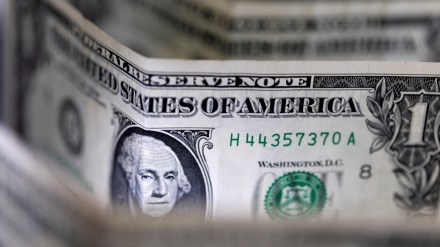By Jamal Mecklai
As Donald Trump gets into his stride, the contradictions inherent in his loudly broadcast intentions are coming into focus. Let us recall that while his victory was remarkably broad-based, his primary appeal was to Americans who felt left behind — prices were too high, immigrants were taking jobs and frightening them, and the government was just unresponsive.
To address all this, he has repeatedly said that he will impose tariffs across the board on imports into the US. In 2023, the US imported over $3.8 trillion of goods and services (around 15% of GDP). Tariffs will affect this in two ways. First, there will be a reduction of imports since some tariff-adjusted prices will be too high and buyers will look for local alternatives. However, local producers will be quick to raise prices — business is business — so any possible improvement in inflation will be quite low. Second, there will be some products for which demand will not be materially affected by price – say, high-end cars from Germany; here the impact will be that prices will rise.
The five largest categories in the US import basket are crude oil, cars, broadcasting equipment, computers, and packaged medications. Given the globalised world we still live in, many of these — cars and computers manufactured by American companies in, say, Mexico and China – will have to be exempt from tariffs; so, too, crude oil, since driving is still the life-blood of middle America.
Thus, overall it would seem that any improvement in inflation will be marginal, if at all, and will be more than counteracted by the discontinuities created in business supply chains. To be sure, the tariffs will help reduce the US budget deficit, but if imports actually fall — which seems likely — the impact may not be that great.
Trump’s second major plank was containing immigration and deporting large numbers of immigrants who are in the US illegally. There are reportedly 11.7 million illegal immigrants (of a total of around 44 million foreign-born workers, about 18% of the US population). First off, it will be a nightmare, and costly to boot, to track down even half the illegal population. Secondly, even to the extent Trump’s people are successful, the impact on prices could be disastrous.
An article in Financial Times (titled Business owners warn Donald Trump’s deportation plan could shut them down) says that “US business leaders are warning that…plan to deport millions of undocumented workers could create mass labour shortages, closing restaurants, crippling farms and small businesses, and raising prices”. Food prices, which was, perhaps, the single loudest complaint of the US electorate, would certainly go up, and perhaps much higher.
A third key idea was to drastically cut the size of the US government, which would reduce the budget deficit which in turn would augur well for inflation. However, only about $900 billion (out of a total US government budget of around $4.2 trillion) is non-defence discretionary spending. Even if the Musk/Kennedy tag team could cut 25% of this, the overall impact on the budget would be a mere $250 billion, which is less even than the government’s annual interest payments.
However, the impact of such substantial cuts on the ground would be horrendous — government services, never high quality in the US, would get even worse and unemployment would certainly climb. The man on the street — again, Trump’s main constituency — would feel the pain.
On the other side, of course, are the plutocrats, some of whom funded Trump, eagerly awaiting the continuation of the tax cuts, and, with their tongues hanging out, “please sir I want some more”. He won’t want to disappoint them, which would send the deficit skyrocketing further.
Thus, the overall impact of these core policies on inflation may well be negative and will certainly create considerable dislocation in the economy, very likely leading to increased unemployment.
Despite all this, US equity markets are hysterically excited — they jumped 3.5% on the day of the election results and climbed further over the next few days. While they have since eased a bit, the expectation of tax cuts suggests that there may be room for the markets to go still higher.
However, the bond market remains more than circumspect with the 10-year bond yield holding around 4.5%, just 20 basis points (bps) or so below the long-term high it hit in April, when the fearsome mantra was “higher for longer”. The Fed did cut rates by 25 bps at its November meeting (just after the election results) but the consensus for another cut in December appears to have weakened, and with the Trump plan looking to fuel rather than contain inflation, the market may find itself testing those highs again.
The dollar has surged with the DXY (at nearly 107) having broken through two resistance levels and currently looking at a blue sky till 110. My sense — which I suspect the Reserve Bank of India shares — is that the dollar is already too high, but as we all know forecasting markets is a mug’s game, more so when the game is getting crazier by the day.
The author is CEO of Mecklai Financial
Views are personal
